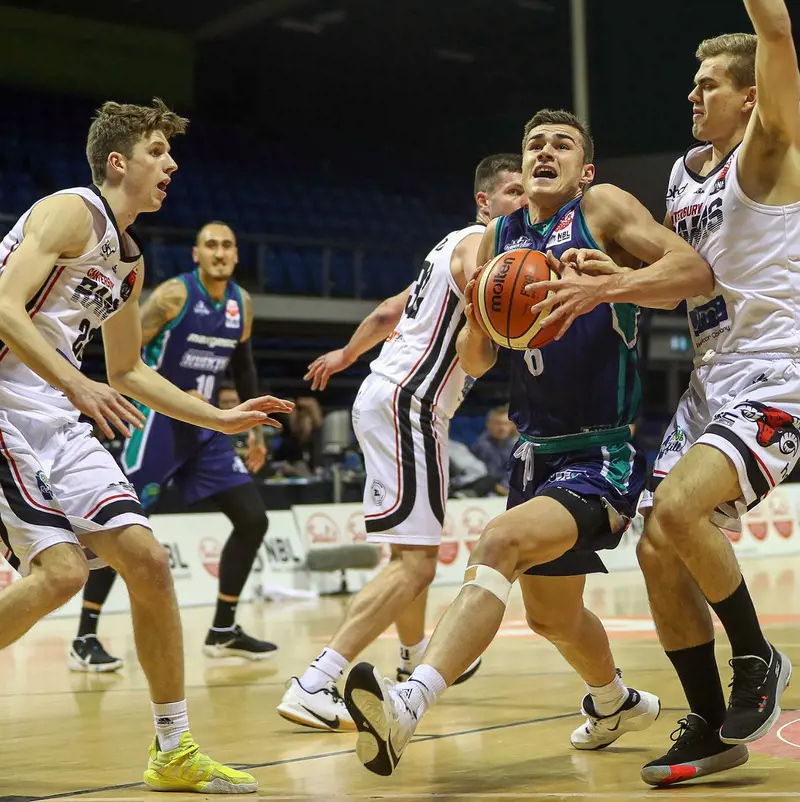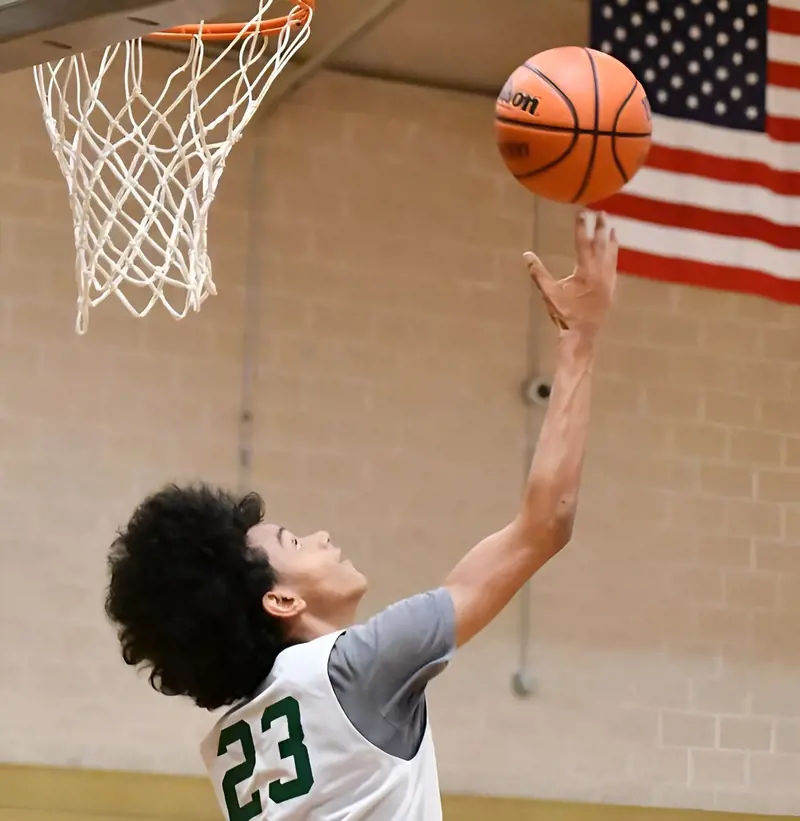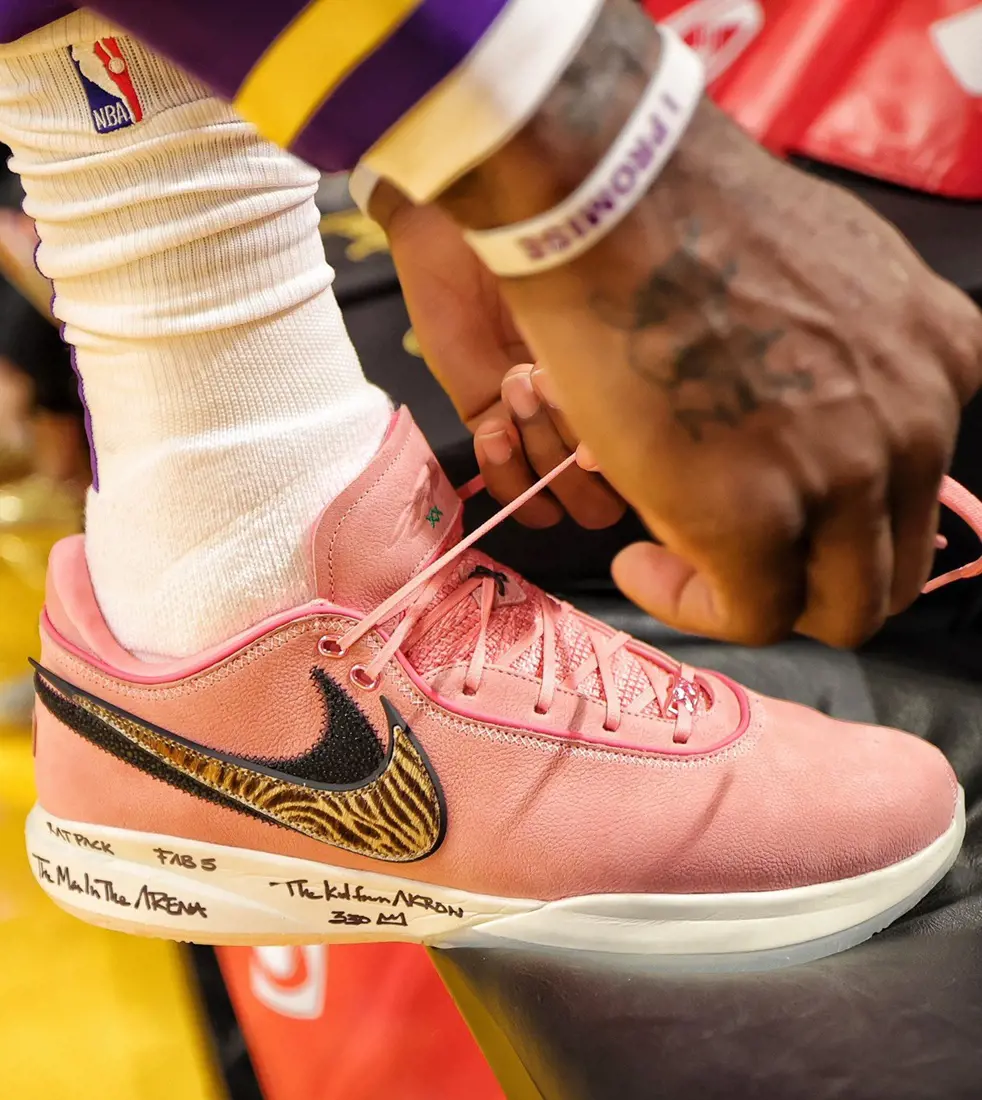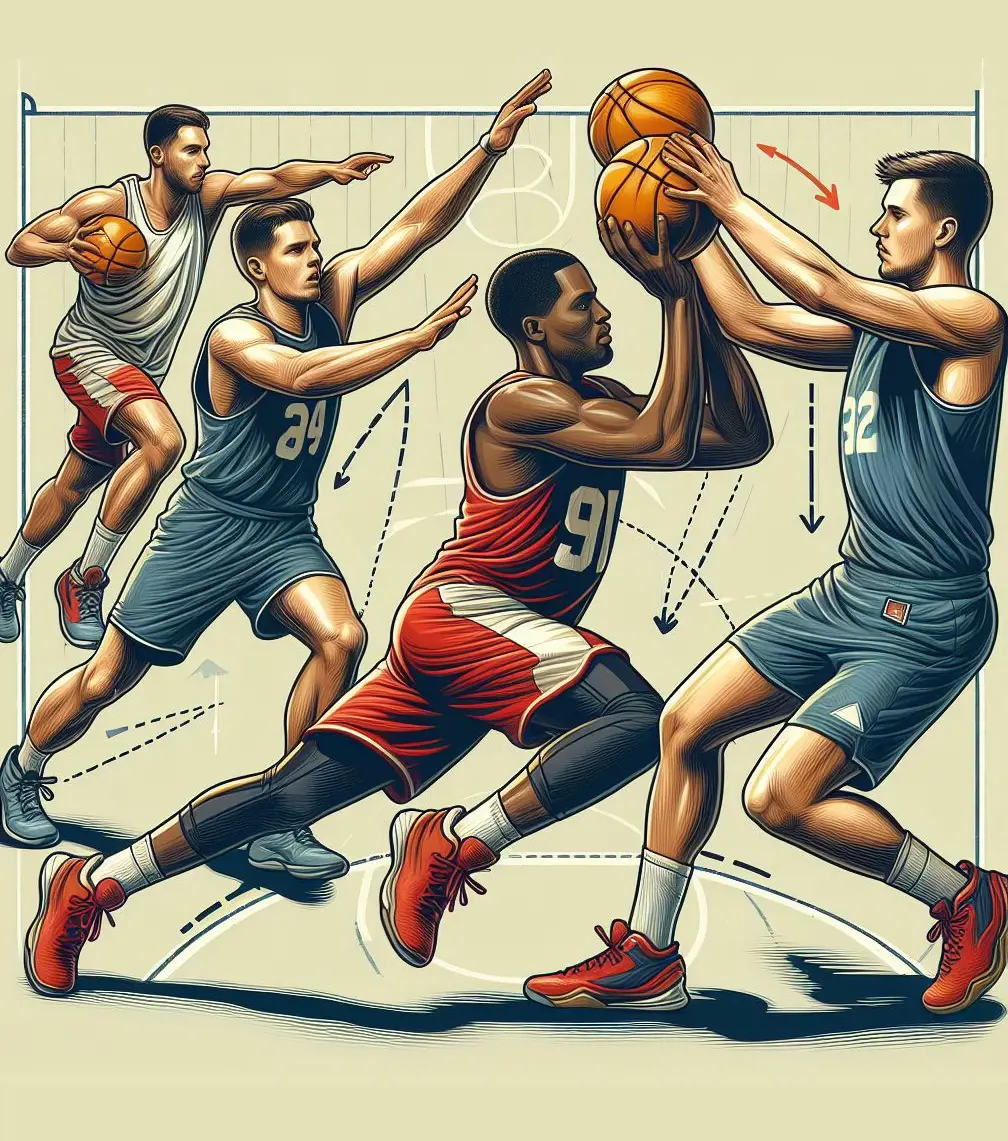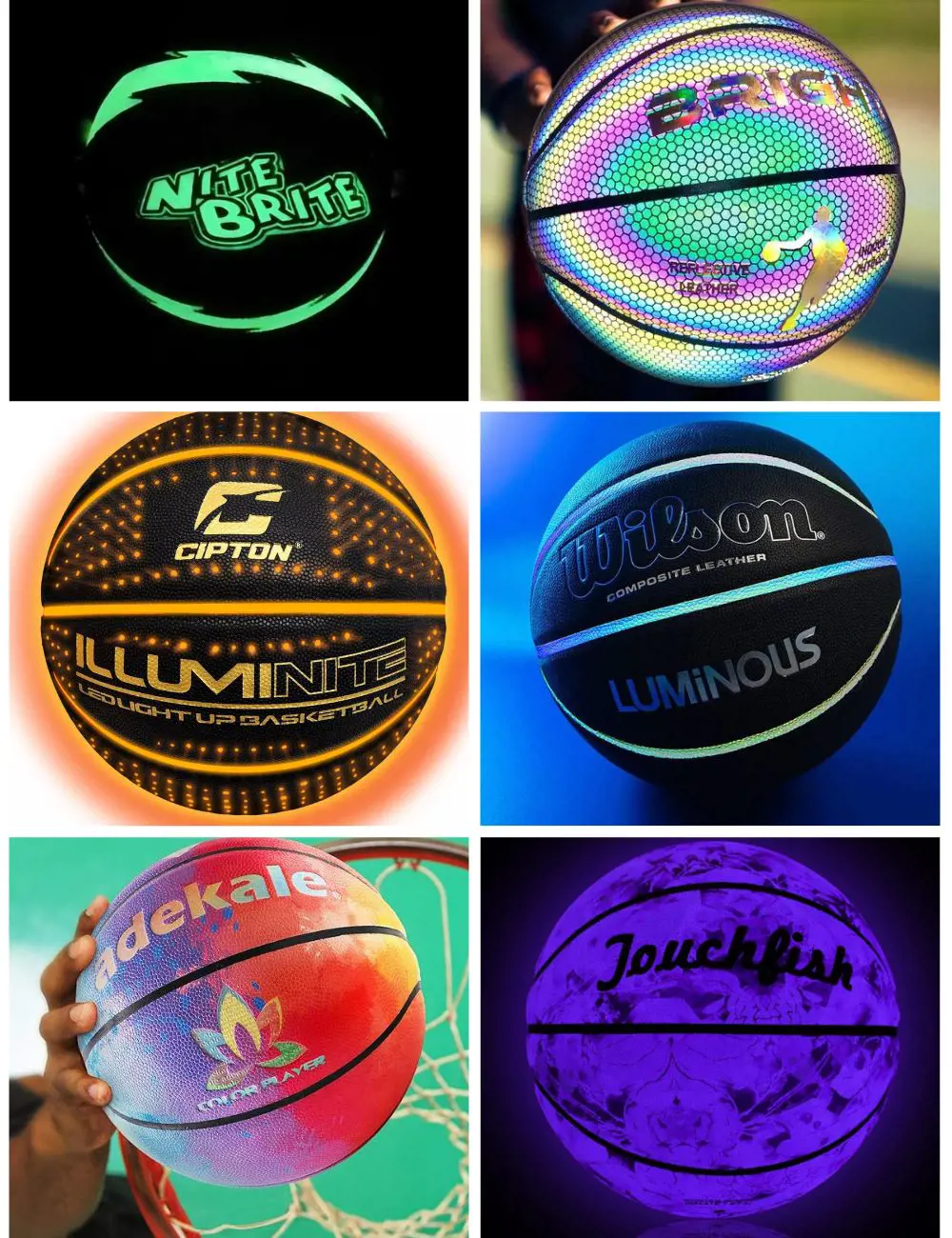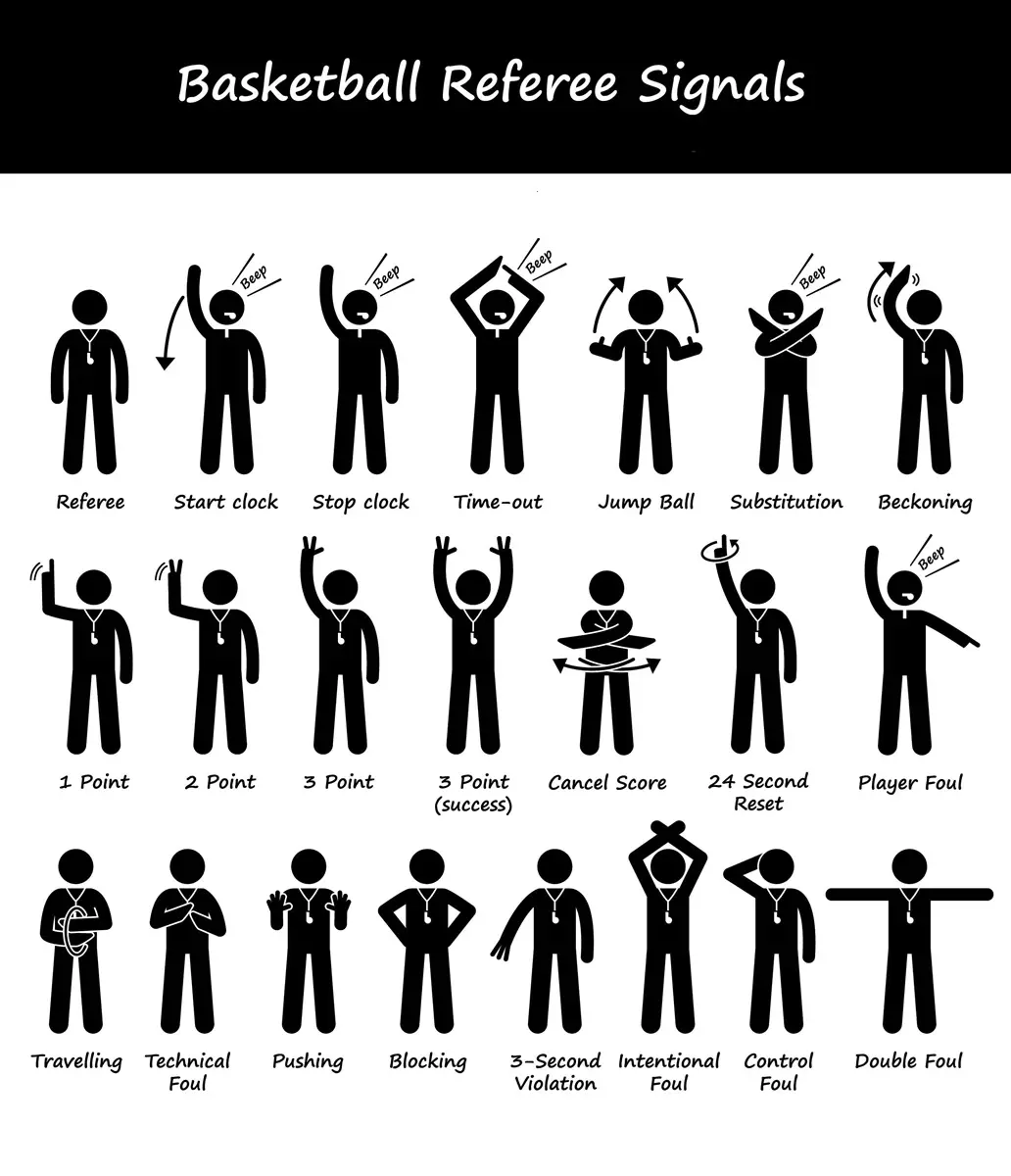
In the intricate dance of basketball, referees play a pivotal role, ensuring fair play and maintaining order on the court.
From the shrill of the whistle to the pointed direction of a finger, each gesture carries a specific meaning, a silent conversation between official and player that shapes the narrative of the match.
Understanding the language of their signals is crucial for players, coaches, and fans alike. These signals are the silent orchestrators of the game, conveying decisions with precision and authority.
In this guide, we will unravel the mystique behind some basketball referee signals, shedding light on the nuanced gestures that dictate the ebb and flow of the game.
1. Traveling

When a player illegally moves one or both of their feet without dribbling the ball, they commit a traveling violation.
This means that the player has taken steps without properly establishing a pivot foot, leading to an unfair advantage. The referee will indicate this infraction by crossing both arms in front of their face and making a circular motion with them, signaling to all participants that the traveling violation has occurred.
A shuffle of the feet prompts the referee's "traveling" signal, highlighting a player's illegal movement without dribbling.
2. Illegal or double dribble
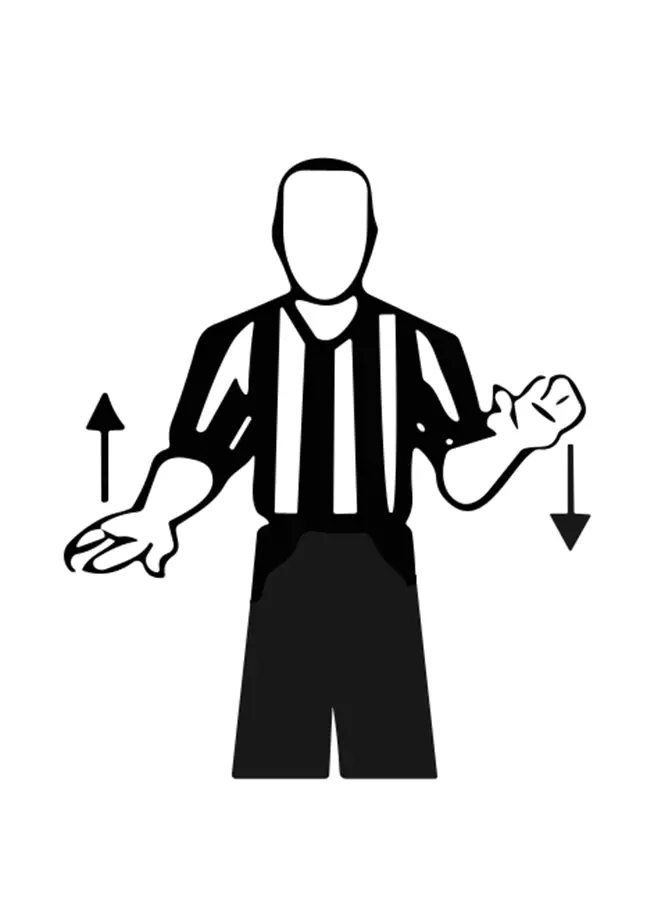
When a player dribbles the ball, stops, and then resumes dribbling, it constitutes a double dribble, a violation of the game's fundamental rules.
Referees convey this infraction by placing both hands, one atop the other, and rotating their wrists in a rolling motion.
This signal reinforces the importance of continuous and controlled ball handling, discouraging players from gaining an unfair advantage by restarting their dribble after coming to a stop.
3. Carrying Violation
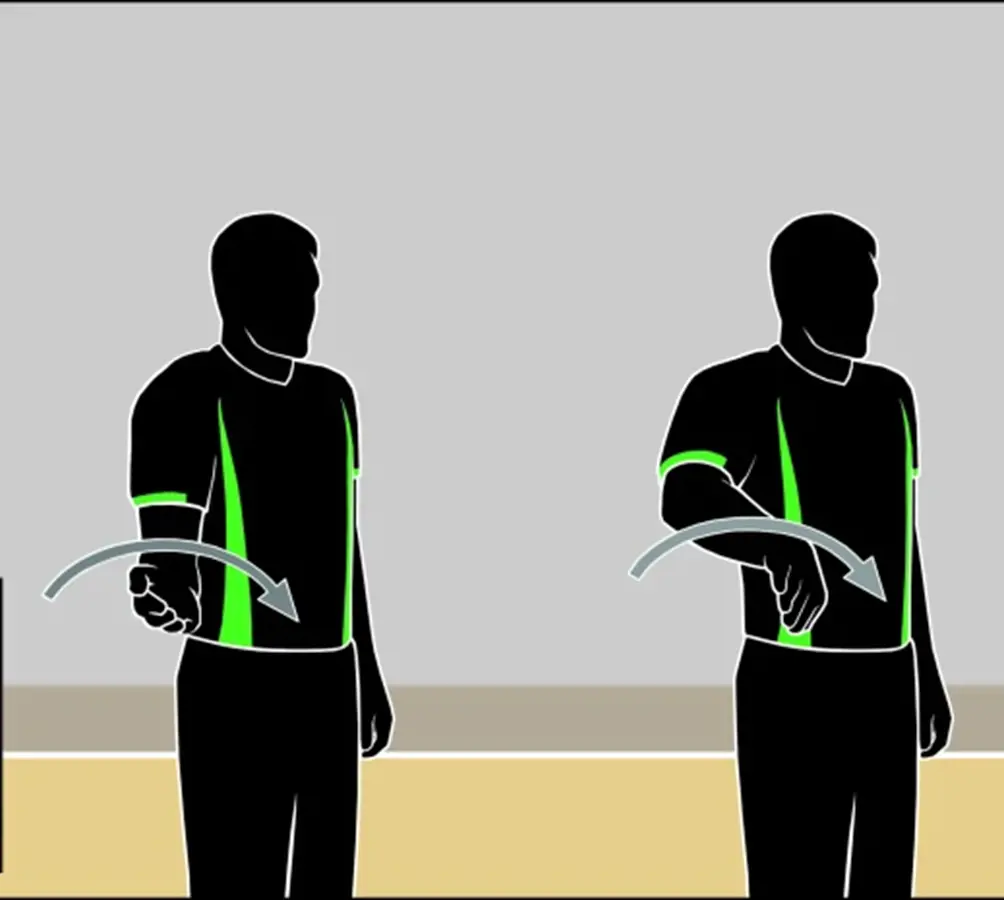
The carrying violation, also known as palming, occurs when a player momentarily cradles or scoops the ball while dribbling.
To signal this infraction, referees use an unmistakable motion, extending one hand with the palm facing down and moving it in a horizontal scooping motion across their body.
This visual cue communicates to players, coaches, and spectators that the player in possession of the ball has violated the rules by failing to maintain proper dribbling technique.
4. Three-Second Violation

In basketball, offensive players are prohibited from remaining in the key or paint area for more than three seconds at a time.
Referees signal this infraction by raising one hand with three fingers extended, making it clear that an offensive player has overstayed their welcome in the key.
This violation aims to prevent teams from gaining an unfair advantage by clogging the paint, reinforcing the importance of player movement and fair play. The three-second violation signal serves as a reminder to maintain the dynamic nature of the game.
5. 5-Second Violation

Spotting a 5-second violation in basketball relies on two key referee signals: the "five-finger fist" and the "countdown."
When an offensive player receives the ball and is closely guarded below the free throw line, the ref raises a closed fist with five fingers extended. As the player holds the ball, the ref starts counting down by folding fingers, starting with the thumb.
If all five fingers disappear before the player passes, shoots, or dribbles toward the basket, the ref blows the whistle and signals the violation with a "five-finger fan" gesture, awarding the ball to the defense.
6. 8-Second Violation
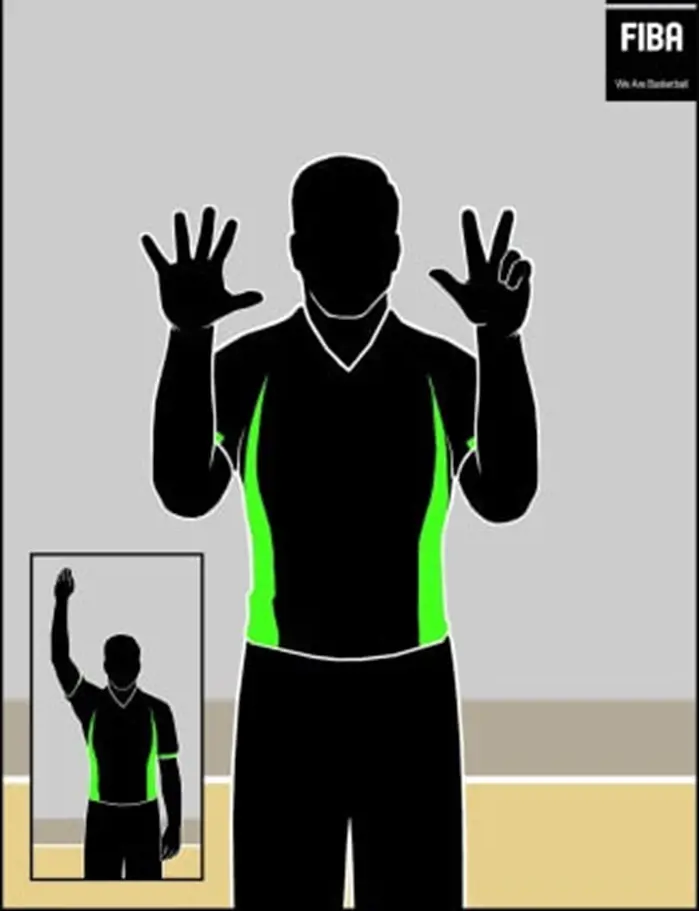
When an offensive team stalls in their backcourt, the ref whips out their arms for the 8-second violation signal.
Imagine scissors crossed at the wrists, palms facing outwards. Each second, the ref lowers one hand, reaching palm down at the eight-second mark.
If the ball doesn't cross half court by then, it's a turnover! Watch for the countdown and a firm whistle, followed by the ref pointing the ball to the opposing team at the midcourt line for the inbound.
7. 24-Second Shot Clock Violation
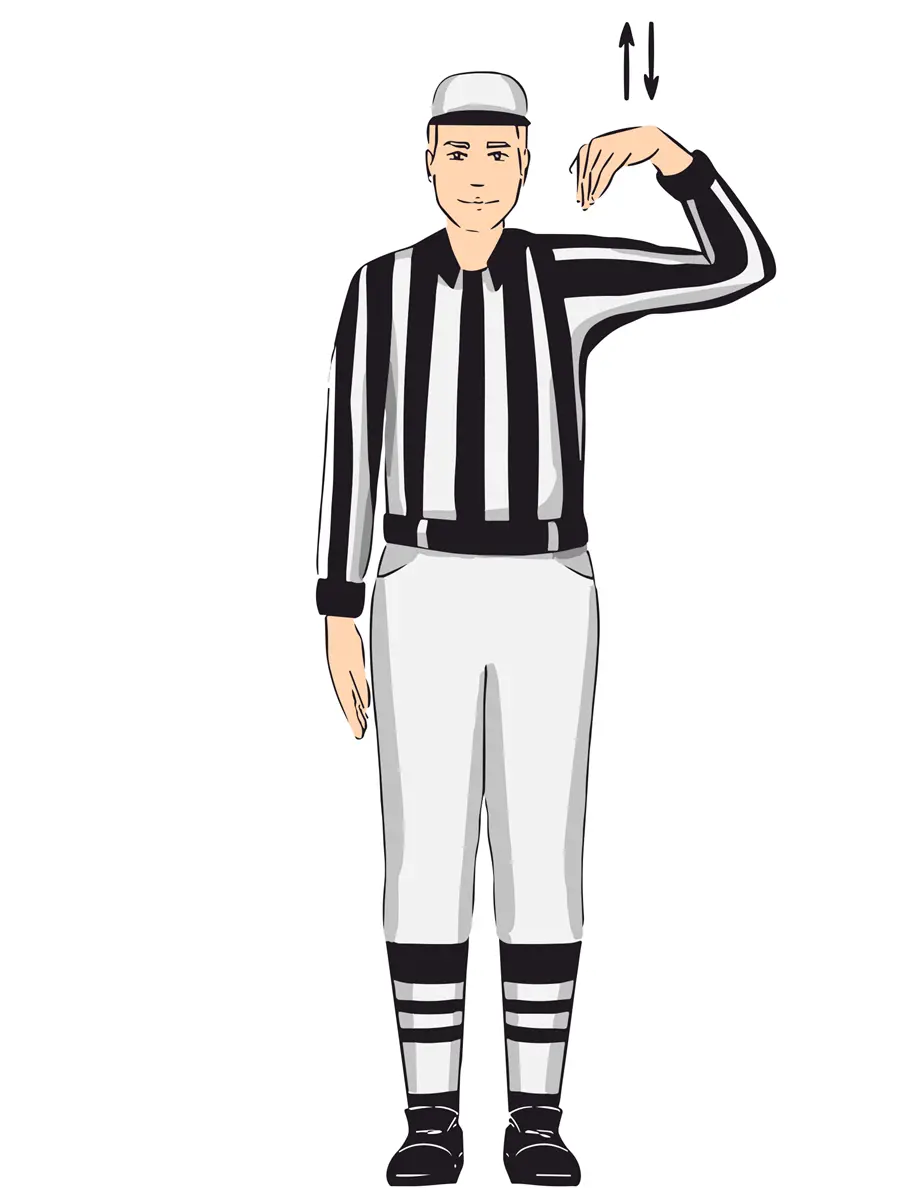
The shot clock plays a vital role in contemporary basketball, introducing a sense of urgency to offensive strategies.
If a team does not take a shot within the designated 24 seconds, the referee indicates a shot clock violation by raising one hand and tapping the corresponding wrist with the other.
This straightforward signal informs players, coaches, and onlookers that the offensive team has surpassed the time limit, leading to a turnover.
8. Backcourt Violation (Over-and-Back)
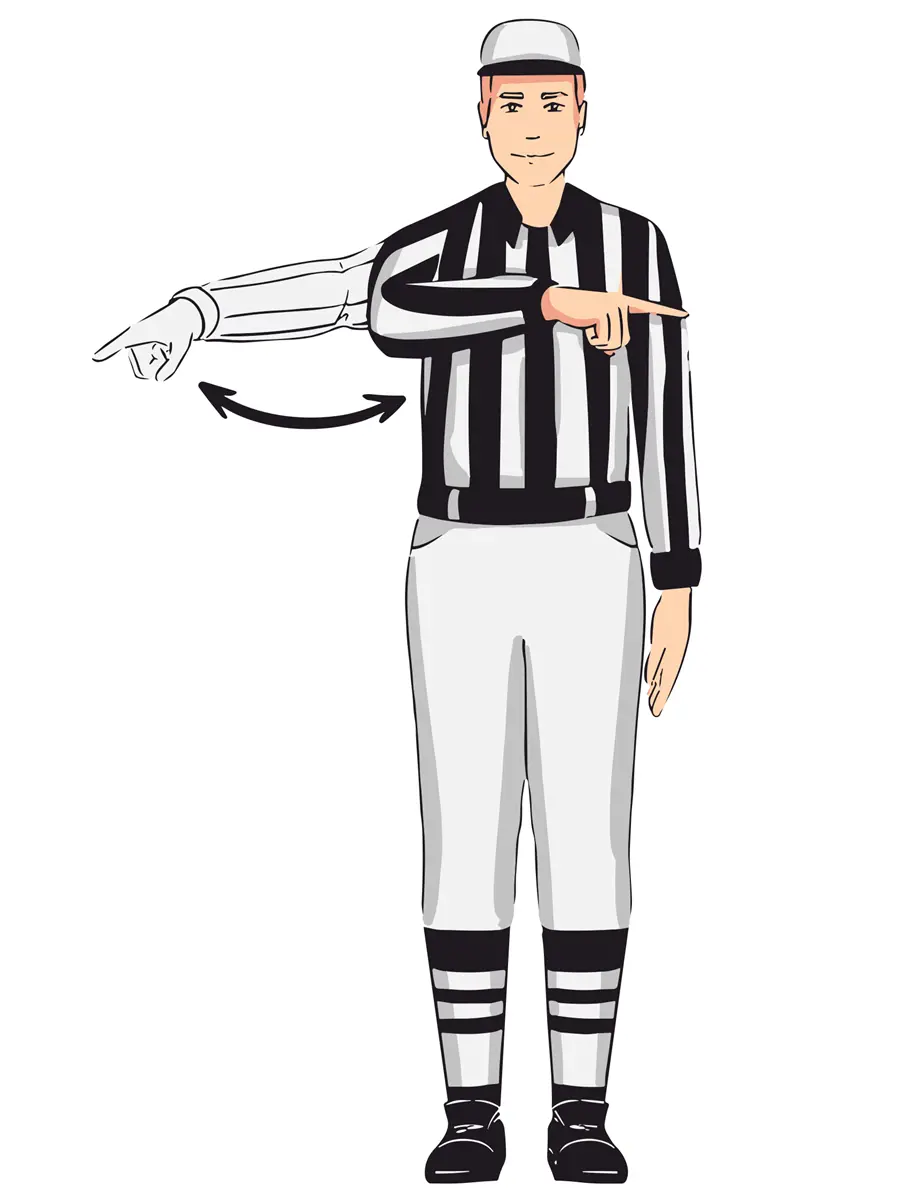
The Over-and-Back violation, signaled by a referee raising both arms with fists clenched above their head, occurs when a player with the ball in their hands travels beyond the half-court line and then back into the frontcourt without dribbling the ball.
Imagine an hourglass shape with the half-court line as the middle horizontal line. Crossing that line and re-entering the same half without a dribble is like sand slipping through the bottom half, resulting in this violation.
This signal, clear and distinct, ensures both players and spectators recognize the infringement, keeping the game flowing smoothly.
9. Jump Ball
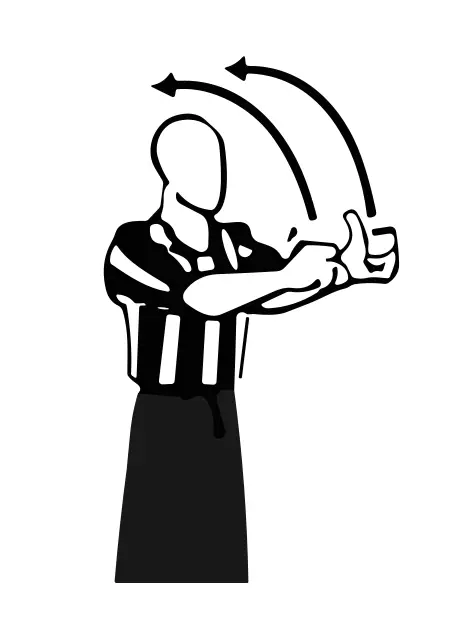
A jump ball is a method of restarting play in basketball when the ball is held by two opposing players at the same time, or when a violation occurs that does not warrant awarding the ball to either team.
The umpire will signal a jump ball by raising both hands above their head, with the palms facing each other. They will then form a fist with each hand and slam them together, once for each team that is entitled to a player in the jump ball.
The jump ball is held at the center of the court, where the two players involved in the violation stand facing each other. The referee throws the ball straight up in the air, between the two players.
10. Substitution

To signal a substitution, a basketball referee makes an "X" with their arms crossed high across their chest. This universally understood symbol tells both teams and the scorer's table that a player is coming out and another is entering the game.
The substitution can only take place during a dead ball, meaning the clock is stopped and the ball is not in play.
Once the referee signals the substitution, the outgoing player must report to the scorer's table and the incoming player must check in at the same table before entering the court.
11. Timeout

A timeout in basketball is a brief pause in the game, typically requested by a coach to strategize with their team or make substitutions.
There are two main types of timeouts: team timeouts and charged timeouts. Each team is allotted seven team timeouts per game, which can be used at any time during the game.
The referee calls Charged timeouts when a team commits a foul with less than one minute remaining in the game or overtime.
To signal for a timeout, the coach or player will raise their arms in a "T" shape and call for a timeout. The referee will then acknowledge the timeout by raising their own arms in a "T" shape and pointing to the scorer's table. The clock will be stopped and the game will be paused.
12. Kicking
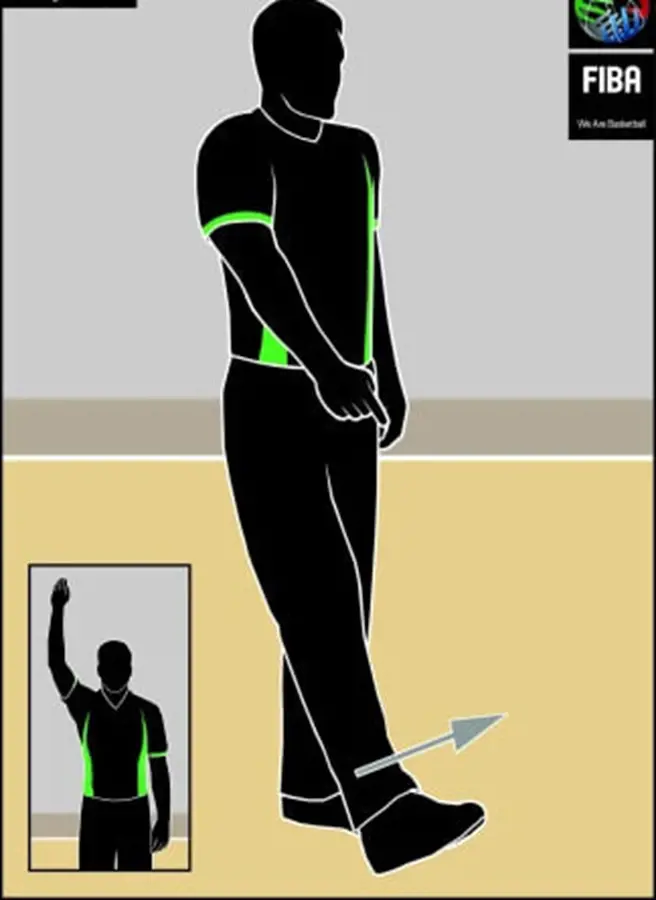
When a player intentionally kicks the ball in basketball, the referee blows their whistle and makes a clear signal to indicate the violation.
This involves simply raising one foot off the ground, and pointing it towards the offending player. It is a straightforward gesture that instantly informs everyone on the court and spectators of the infraction.
This kicking signal is distinct from other hand signals used for fouls or violations, ensuring clarity and efficient communication during the fast-paced game. Remember, kicking is a violation, not a foul, so no free throws are awarded. The ball is simply awarded to the other team out of bounds.
13. Hand Check Foul
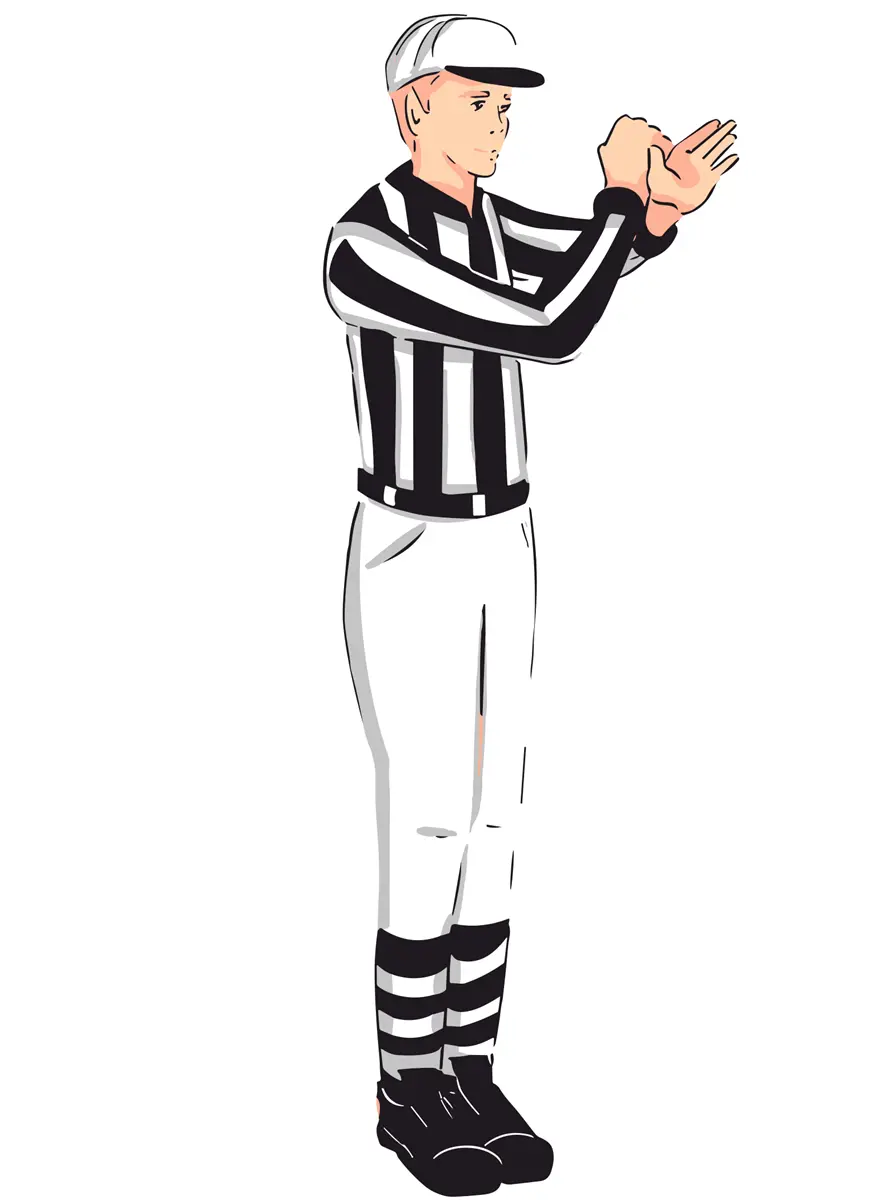
Detecting a hand check violation demands a discerning eye, as the official communicates subtly through gestures.
Be vigilant for any prolonged contact of the palm with the offensive player, particularly in the vicinity of the torso or arms. The referee signals the infraction with a raised index finger directed at the defender, often accompanied by a swift downward motion, mimicking the prohibited hand placement.
If the foul significantly hinders the player's movement or momentum, anticipate a more pronounced whistle and possibly an outstretched arm pointing towards the free-throw line, denoting shooting fouls.
It is crucial to recognize sustained, illicit hand contact that restricts the offensive player's freedom on the court.
14. Charging Foul
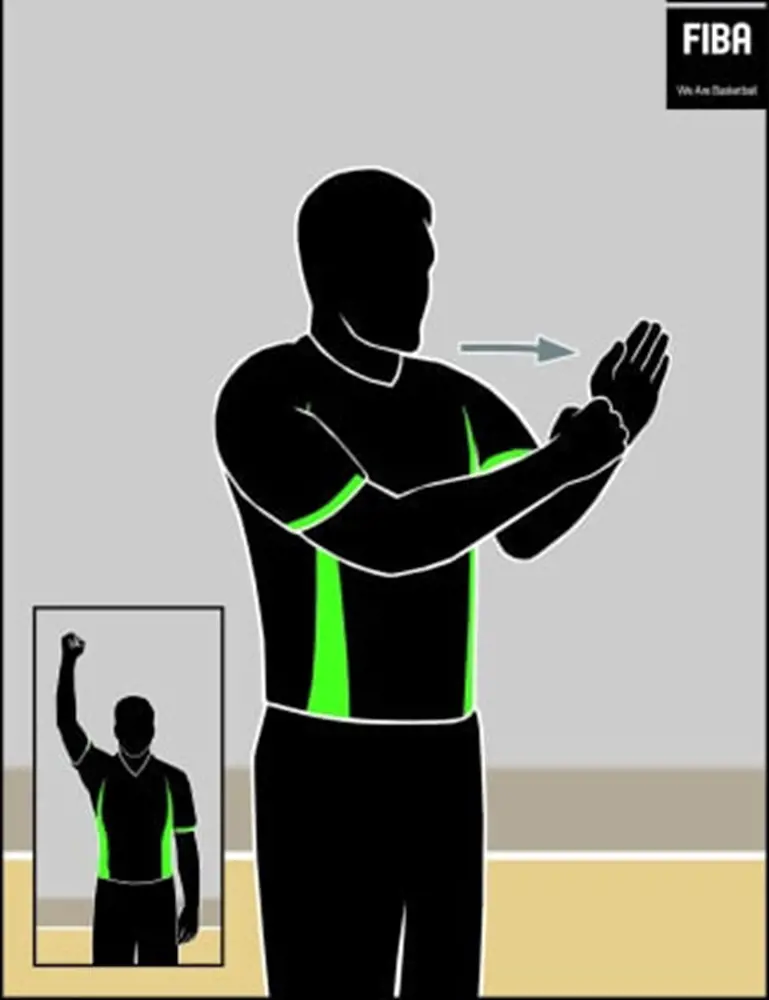
A charging foul in basketball occurs when an offensive player initiates contact with a stationary defensive player who has already established a legal guarding position in the restricted area.
It is essentially an offensive foul where the attacker runs into the defender, not the other way around.
To indicate a charging violation, the referee will form a fist with one hand and then strike the open palm of the other hand in a punching motion.
This hand signal indicates that the offensive player was the one responsible for the illegal contact.
15. Blocking Foul
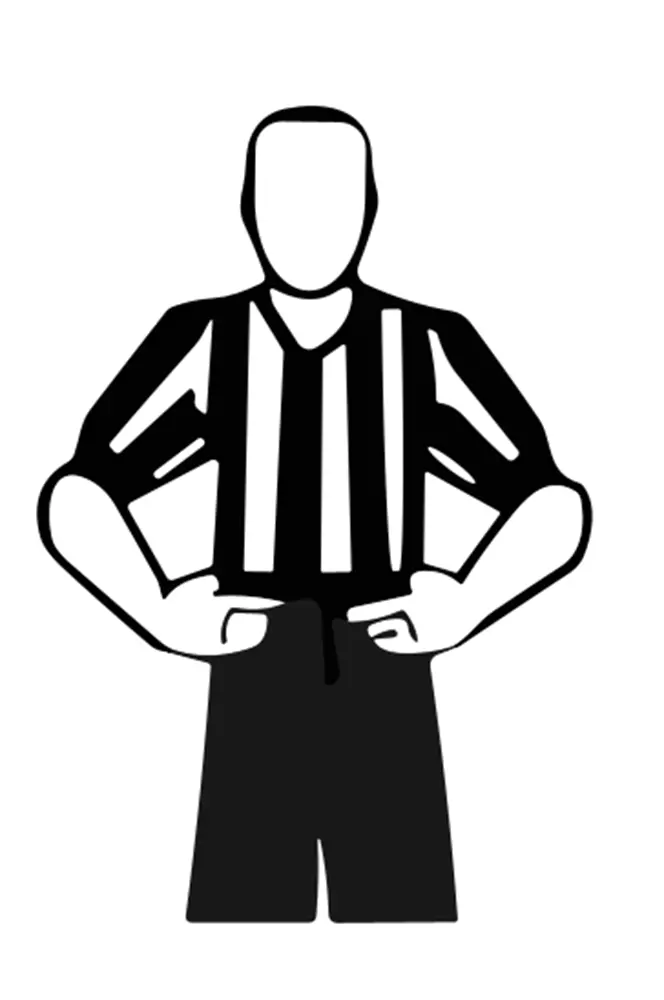
A blocking foul in basketball occurs when a defensive player illegally hinders an offensive player's progress with their body, preventing a shot or layup attempt.
To indicate this, the official will make a gesture with both hands clenched into fists, placed firmly on their hips with elbows tucked in tight.
This visual signal lets players and spectators know that the offensive player was unfairly impeded, and free throws or other penalties may be awarded.
Remember, a blocking foul differs from a charging foul, where the offensive player initiates contact with a legally positioned defender.
16. Technical foul
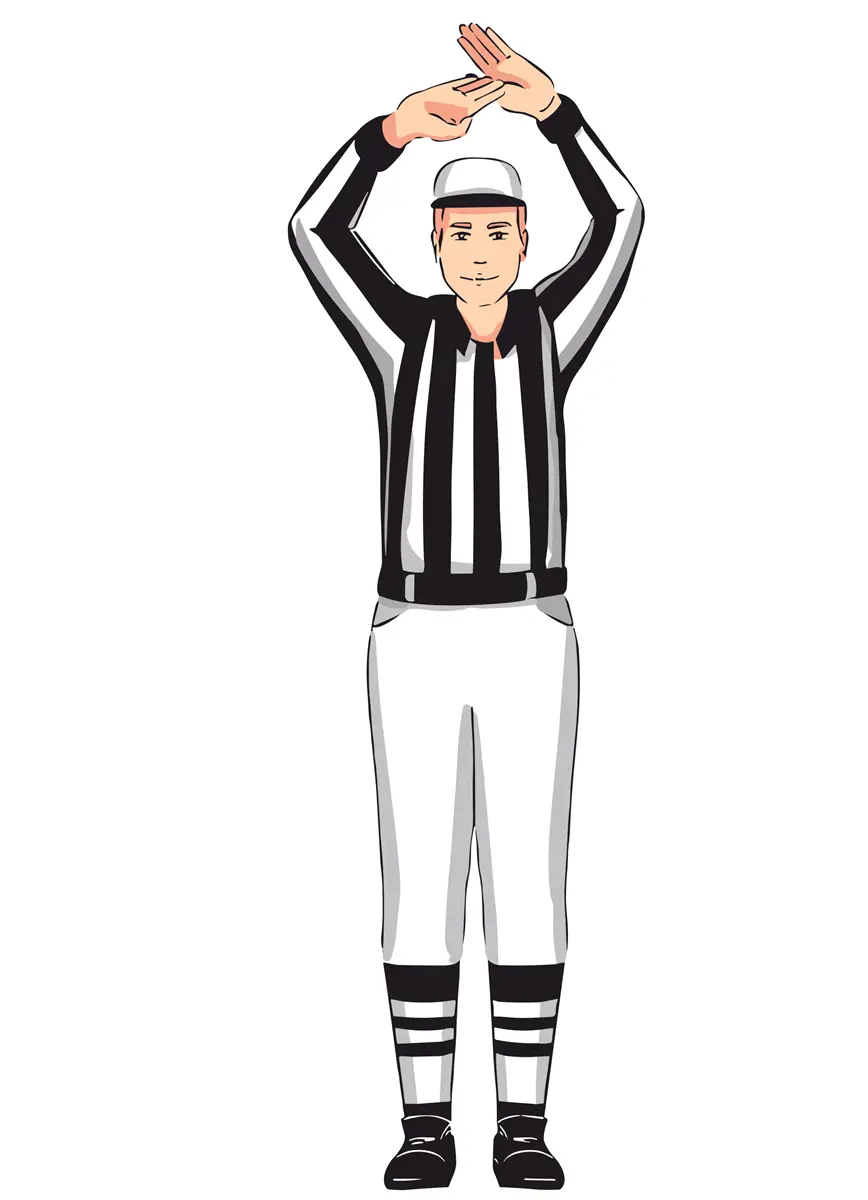
When a basketball player is charged with a technical foul, the referee extends their arms to create a giant T shape with their palms turned outward.
This widely understood signal indicates unsportsmanlike behavior, such as disputing calls with referees, teasing opponents, or causing unnecessary delays in the game.
The consequence of this infraction is a single free throw for the opposing team and possession of the ball. Technical fouls contribute to a player's overall foul count and, if accumulated excessively, may result in disqualification.
Therefore, it is crucial to maintain composure on the court to avoid encountering the ominous T gesture.
17. No Basket
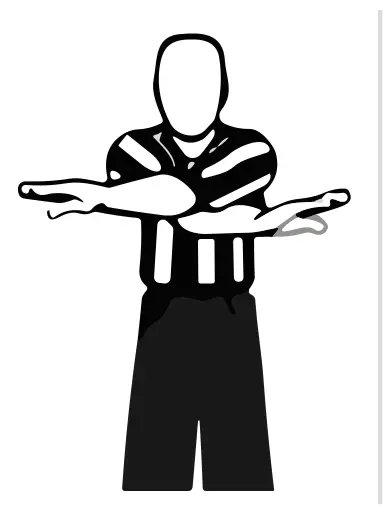
The "No Basket" signal in basketball is a swift, decisive gesture used by referees to indicate a shot attempt unsuccessfully reaching the net.
The official will signal that the shot does not count by waving their arms and then crossing them out in front of them, indicating a clear indication to the players and spectators.
Depending on the situation, the referee might also point to the offending team or explain the reason for the call, like an offensive foul or a ball going out of bounds.
18. Start clock
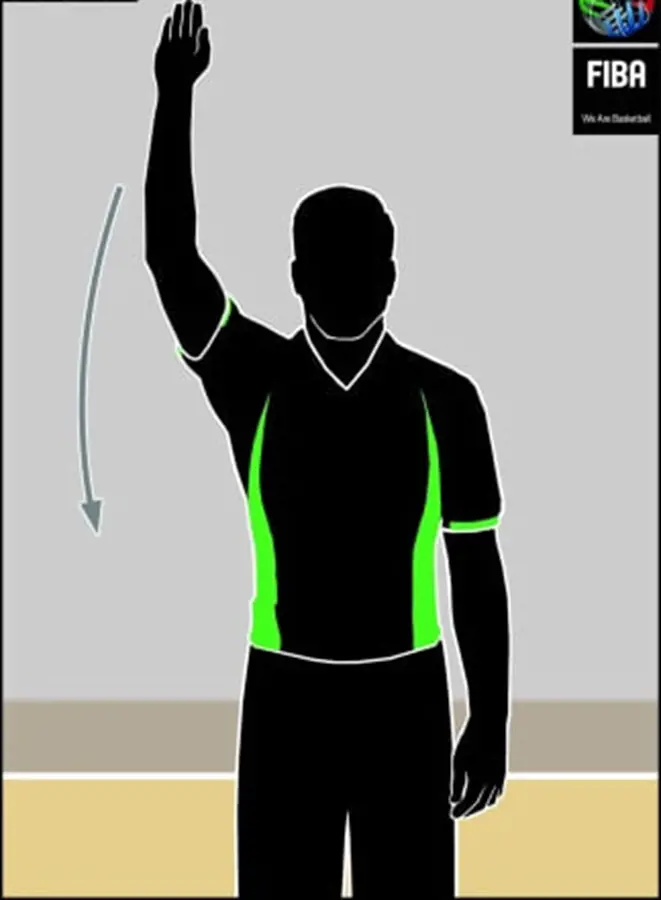
In basketball, numerous instances occur when the game pauses and the clock ceases to run. Resumption only happens when a player on the court comes into contact with the ball.
Rather than relying on the timekeeper's discretion to halt the clock, the process involves waiting for a referee signal to initiate the clock. The referee keeps their hand raised until the appropriate moment, at which point they lower their arm, signaling the resumption of time.
19. Three point score

In basketball, a three-point score is signaled by the referee using distinct hand signals to communicate with players, coaches, and spectators.
When a player successfully makes a shot from beyond the three-point arc, the referee raises one arm straight up, forming an "L" shape with the forearm and upper arm.
The raised arm serves as a visual cue to indicate that the basket is worth three points. This signal helps everyone on the court and in the audience quickly recognize the scoring action and understand the point value assigned to the shot.
20. Holding Foul
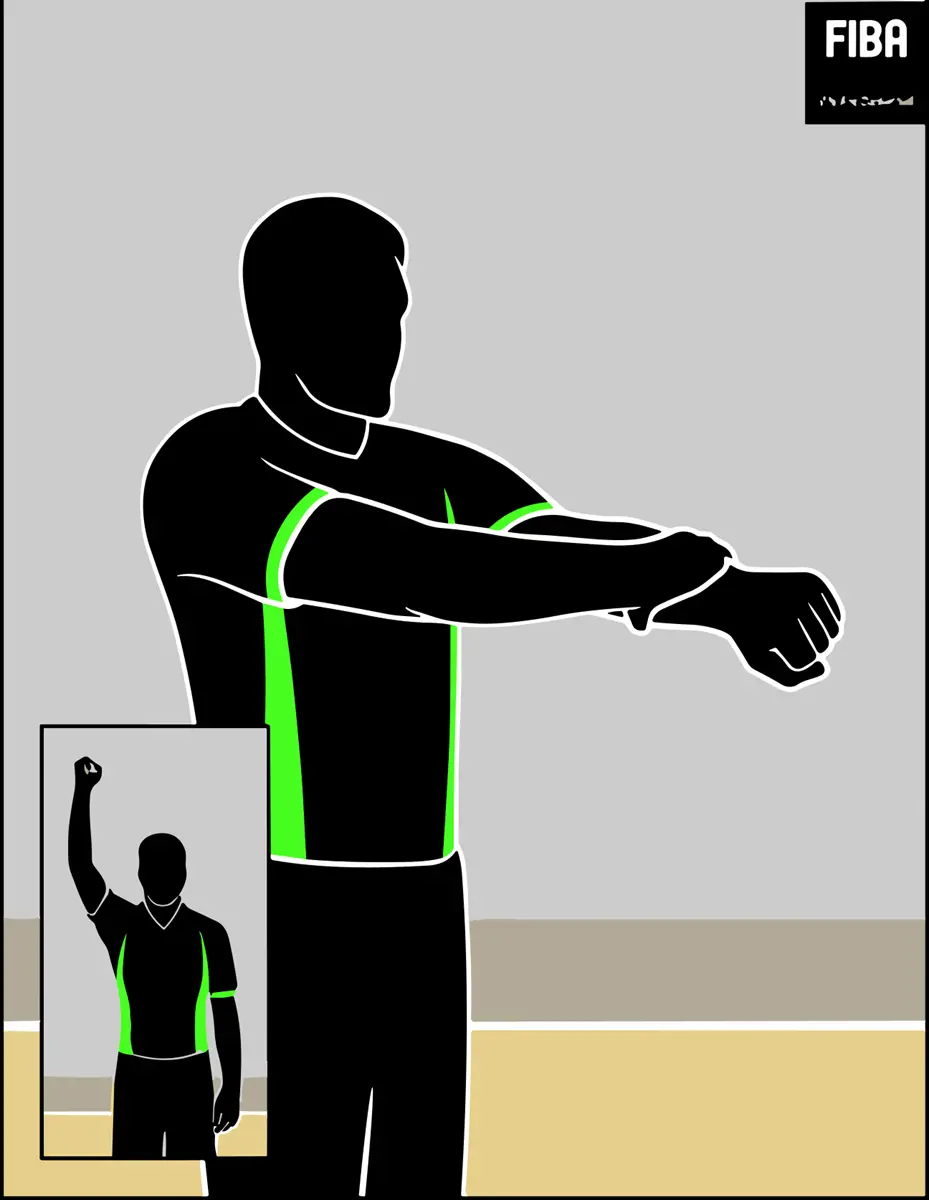
In basketball, it is prohibited to seize an opponent by their jersey or any body part.
If such an action occurs, it results in a holding foul being called. The referee indicates a holding foul by forming a fist with one hand, extending that arm, and mimicking a "grabbing" motion with their other hand on the wrist.
